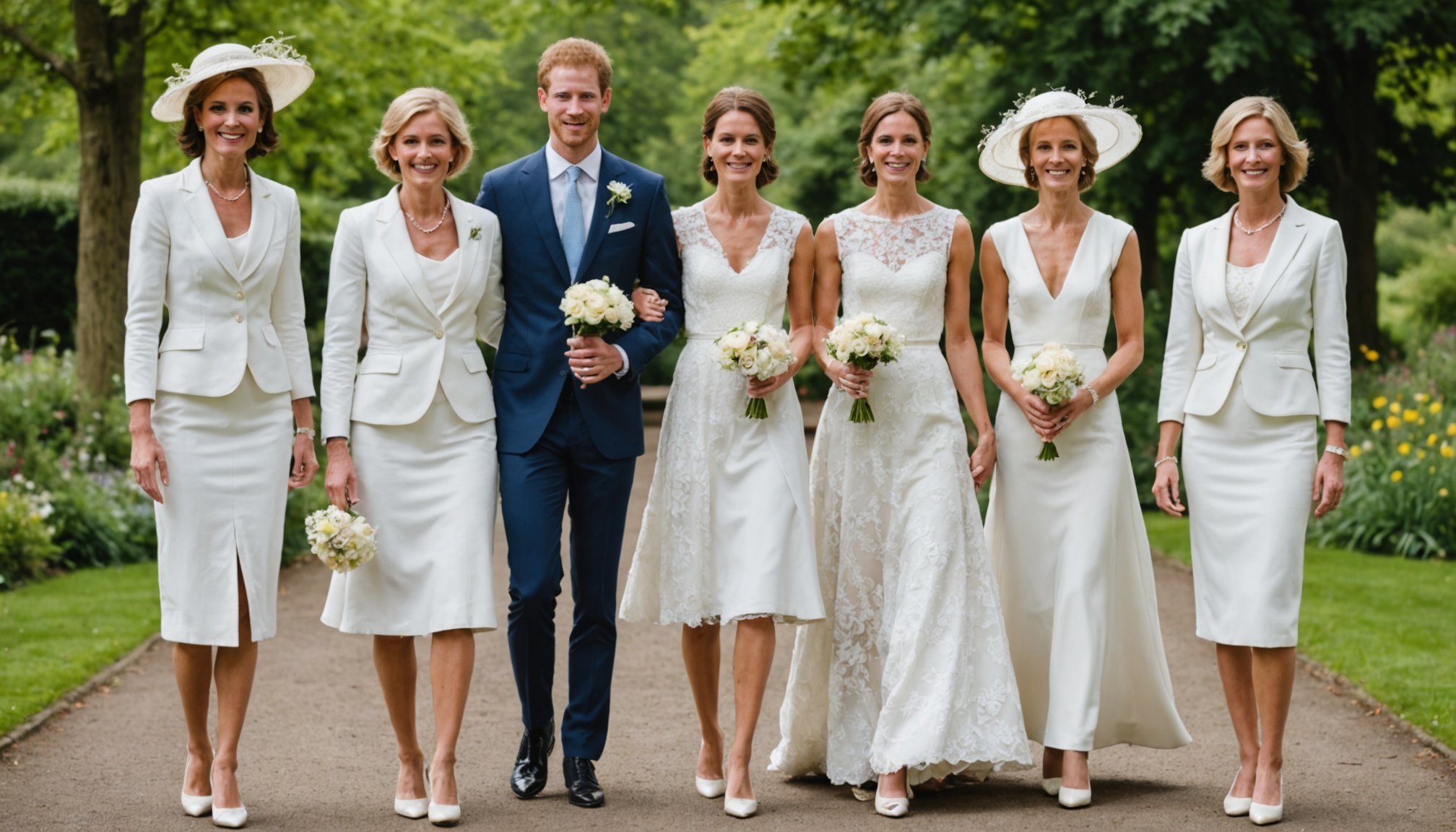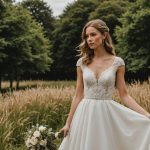Wearing white to a wedding in the UK is often shrouded in debate. Traditionally reserved for brides, this colour choice can raise eyebrows and even cause faux pas. Yet, in contemporary society, wedding etiquette evolves. Many guests wonder if it’s acceptable to don white attire without offending anyone. This guide unravels the nuances of wearing white to weddings, offering insights on when it might be appropriate and how to approach this delicate choice with confidence. Prepare to navigate this etiquette minefield with ease!
Understanding Wedding Etiquette in the UK
Navigating the world of wedding etiquette in the UK can be a daunting task, especially with its rich tapestry of cultural norms and traditions.
Also to see : Ultimate Guide to Choosing the Ideal Raincoat for the UK”s Ever-Changing Weather
Traditional Wedding Attire Norms
In the UK, traditional wedding attire plays a significant role in setting the tone for the ceremony. Men often opt for morning suits or tailored suits, while women typically choose elegant dresses, avoiding white to ensure the bride remains the center of attention. A fascinator or hat is a popular accessory for female guests, adding a touch of sophistication.
Respecting the Couple's Preferences
Understanding and respecting the couple's preferences is crucial. Couples may have specific guidelines regarding attire, often included in the invitation. Adhering to these preferences is a sign of respect and contributes to the overall harmony of the event. Remember, the aim is to celebrate the couple's union, not to draw attention away from it.
In the same genre : Essential Components of a Eco-Friendly Capsule Wardrobe for UK Women: A Complete Guide
Social Implications of Attire Choices
Choosing the appropriate attire is not just about following cultural norms; it also has social implications. Dressing inappropriately can lead to discomfort or even embarrassment, impacting the overall experience for both the guest and the couple. Being mindful of these wedding etiquette standards ensures that the focus remains on the joyous celebration.
Key Points to Remember:
- Traditional attire is highly valued.
- Respect the couple's specific requests.
- Consider the social context of your attire choices.
By understanding these aspects of wedding etiquette, guests can confidently participate in UK weddings, ensuring a respectful and enjoyable experience for all.
Historical Context of Wearing White
Understanding the history of white wedding dresses unveils a fascinating journey through cultural and social evolution. The choice of white attire in weddings, now a widespread tradition, carries deep significance and reflects changes over time.
Origin of White Dresses in Western Weddings
Tracing back to the 19th century, the tradition of donning a white wedding dress was popularized by Queen Victoria. Before her, brides often wore their best dress, regardless of color. Queen Victoria's choice of white in 1840 symbolized purity and set a new precedent in wedding traditions.
Cultural Significance of Color Choices in Weddings
Color choices in weddings have varied across cultures and eras. In Western cultures, white has come to symbolize innocence and new beginnings. However, in other cultures, such as in China and India, red is often the preferred color, symbolizing prosperity and joy. This diversity highlights the rich tapestry of wedding traditions worldwide.
Evolution of Wedding Dress Norms Over Time
Over the years, the norms of wedding dress selections have evolved significantly. While white remains the traditional choice in Western cultures, modern brides are increasingly opting for different colors and styles, reflecting personal tastes and cultural shifts. This evolution emphasizes the dynamic nature of wedding traditions and the ongoing reinterpretation of the significance of white attire.
Key Aspects of Wedding Dress Evolution:
- Queen Victoria's influence in popularizing white
- Varied cultural significance of colors
- Modern trends and personal expression
By exploring these historical and cultural dimensions, one gains a deeper appreciation for the enduring and evolving nature of wedding traditions.
Expert Opinions on Wearing White to Weddings
Insights from professionals help navigate wedding attire choices.
Professional Insights on Wedding Etiquette
Wedding experts often emphasize the importance of understanding the nuances of etiquette advice when attending weddings. According to these professionals, wearing white remains a contentious issue, primarily because it traditionally signifies the bride's attire. Etiquette experts suggest that guests should avoid white to prevent any potential misunderstanding or conflict, maintaining the bride as the focal point of the celebration.
Common Misconceptions About Wearing White
Despite clear guidelines, there are several common misconceptions about wearing white to weddings. Some believe that as long as the outfit isn't entirely white, it's acceptable. However, wedding planners caution that even predominantly white attire can be seen as inappropriate. Another misconception is that these rules don't apply to less formal or themed weddings, but professional insights reveal that respecting the couple's preferences is always paramount.
Case Studies of Different Wedding Scenarios
To illustrate the complexity of wedding etiquette, consider these scenarios:
- Traditional Weddings: Guests should adhere strictly to avoiding white, as these ceremonies often hold cultural significance.
- Beach Weddings: While more casual, etiquette advice still discourages white to maintain respect for the bride.
- Themed Weddings: Even in creative settings, wedding experts advise confirming with the couple before choosing white attire.
By understanding these perspectives and scenarios, guests can confidently navigate their attire choices, ensuring they honor the couple's special day.
Regional Variations in Wedding Attire Norms
Exploring the diverse landscape of regional wedding customs in the UK reveals a fascinating array of attire expectations. These differences are often influenced by local cultural backgrounds, resulting in unique dress codes that reflect the rich heritage of each region.
Differences in Attire Expectations Across the UK
In the UK, regional wedding customs can significantly impact attire choices. For instance, Scottish weddings often feature traditional kilts for men, showcasing a distinct cultural identity. In contrast, weddings in the south of England may lean towards more contemporary styles, with guests opting for sleek, modern suits and dresses. This variation underscores the importance of understanding local etiquette to ensure appropriate attire choices.
Influence of Cultural Backgrounds on Dress Codes
The influence of cultural backgrounds on wedding attire is profound. In regions with a strong Irish presence, you might find guests wearing green or incorporating Celtic motifs into their outfits. Similarly, areas with a significant South Asian community may see vibrant colors and intricate patterns as part of the wedding attire, reflecting traditional regional customs. These cultural influences enrich the tapestry of UK weddings, offering a glimpse into the diverse traditions that shape them.
Examples of Regional Wedding Practices and Attire Choices
- Scottish Weddings: Kilts and tartan patterns are prevalent.
- Welsh Weddings: Incorporate daffodils or leeks, symbols of Welsh identity.
- Northern Irish Weddings: Often feature Irish linen and lace.
- London Weddings: Tend to be more fashion-forward, reflecting the city's cosmopolitan nature.
Understanding these regional wedding customs allows guests to make informed attire decisions, respecting both the couple's wishes and the cultural context of the celebration. By considering local etiquette and cultural backgrounds, guests can ensure their attire is both respectful and appropriate, contributing positively to the joyous occasion.
Alternatives to Wearing White
Exploring diverse color options for wedding guest attire.
Suggested Colors and Styles for Wedding Guests
Choosing the right wedding guest attire involves selecting colors that are both stylish and respectful. While white is traditionally reserved for the bride, guests can opt for a range of hues such as soft pastels, jewel tones, or earthy shades. These colors not only complement various skin tones but also align with different wedding themes. For instance, a garden wedding might inspire floral patterns or green tones, whereas a formal evening event could call for deeper shades like navy or burgundy.
Tips for Choosing Attire That Complements the Wedding Theme
To ensure your attire complements the wedding theme, consider the venue and the season. A beach wedding might invite lighter, breathable fabrics in cool colors, while a winter ceremony could inspire richer textures and darker hues. Communicating with the couple about their color scheme can provide valuable insights, helping you make informed decisions. This dialogue ensures your outfit enhances the celebration without overshadowing the couple's vision.
Importance of Communicating with the Couple Regarding Attire
Open communication with the couple is crucial when selecting your wedding guest attire. It not only demonstrates respect for their preferences but also helps avoid any potential faux pas. By understanding their expectations, you can choose an outfit that aligns with the event's tone and theme. This proactive approach ensures that your attire is both appropriate and appreciated, contributing positively to the overall experience.
Key Considerations for Wedding Guest Attire:
- Opt for colors like pastels, jewel tones, or earthy shades.
- Align attire choices with the wedding theme and season.
- Communicate with the couple to confirm dress expectations.
By thoughtfully selecting your wedding guest attire, you can enjoy the celebration while respecting the couple's special day.
Final Tips for Guests on Attire Choices
Selecting the right wedding guest attire can be a delicate task, ensuring you respect both tradition and the couple's preferences.
Checklist for Ensuring Respectful Attire Choices
To help you navigate the complexities of wedding dress code tips, here is a straightforward checklist:
- Review the Invitation: Check for any specific attire guidelines.
- Avoid Wearing White: Keep this color reserved for the bride.
- Consider Cultural Norms: Be aware of any regional or cultural attire expectations.
- Choose Complementary Colors: Opt for colors that align with the wedding theme.
This checklist serves as a practical guide, ensuring your attire choices are respectful and well-received.
Importance of Considering the Venue and Season
The venue and season play crucial roles in shaping your guest attire guidelines. For instance, a summer garden wedding might call for light, breathable fabrics, while a winter ceremony could necessitate warmer, layered outfits. Understanding these factors will help you select attire that is both comfortable and appropriate for the setting, enhancing your overall experience.
How to Gracefully Navigate Dress Code Discussions with the Couple
Engaging in discussions about the wedding fashion advice with the couple can be approached with tact and sensitivity. Here are some strategies:
- Ask Open-Ended Questions: Inquire about preferred colors or themes.
- Express Enthusiasm: Show genuine interest in aligning with their vision.
- Offer Options: Suggest potential outfits and seek their input.
By following these guidelines, you can ensure that your attire aligns with the couple's expectations, contributing to a harmonious and joyful celebration.











